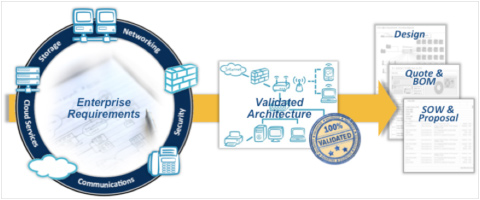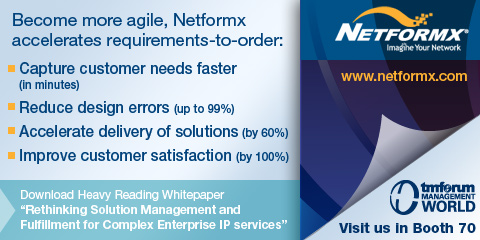for Enterprise Business
Analyzing the Customer's Requirements and Designing Solutions
Winning the heart and wallet of an enterprise necessitates building a long-term relationship where the customer trusts its provider to deliver unique and tailored solutions. With a baseline in place, the conversation can shift to understanding what a customer is looking to accomplish. The richness of services and products coupled with the appetite for cost-effective and more feature-rich solutions results in an unprecedented set of options. The sales cycle has become far more iterative, and customers expect multiple proposals and what-if scenarios before they make their final purchasing decision.
Accelerating the ability to capture requirements and turn them into valid designs makes a huge difference in winning the customer's business. Design tool automation ensures accurate designs and reuse of templates to speed up initial proposals. The resulting impact on productivity can be measured in the ability to respond to customer requests in hours instead of days. The diagram below shows the streamlined process after implementing lifecycle automation.

Implementing Flawlessly
Once the customer selects the solution, the lifecycle shifts to implementation. Errors from an inaccurate baseline or invalid design can result flawed or non-functional implementations. By reducing the potential for errors throughout the requirements-to-order process, the solution is more likely to meet the requirements and function as intended. Automation also ensures consistent order documentation, which is used by the various departments responsible for implementation. Having a single "source of truth" including an architecture design, a Bill of Material (BOM) and a Statement of Work (SOW) for all to use speeds up implementation and ensures that everyone has a common game plan.


Measuring the Impact of Design Errors
A recent white paper published by analyst firm Heavy Reading ("Rethinking Solution Management and Fulfillment for Complex Enterprise IP Services") has shown the value of better processes measured by the reduction in costs related to design errors. According to the research, 30 to 40 percent of IP MPLS orders cannot be deployed as sold. Design errors trigger follow-on costs in a variety of areas from customer care and support to engineering escalations and truck rolls. Heavy Reading's analysis demonstrates that a CSP could save an average of $18.8 million per year in costs for every one million orders processed. The savings is realized as follows:
- Average fallout rate that results in engineer intervention is estimated at 40 percent for complex solutions—$50 cost for engineer time per incident x 160,000 incidents = $8 million
- Ten percent of provisioning errors will lead to truck rolls—$150 cost for each truck roll x 40,000 incidents = $6 million
- Forty percent of customers have ongoing minor problems—$12 cost for each customer support call x 400,000 incidents = $4.8 million
These statistics mirror Bell Canada's experience. Bell saw its error rates improve after implementing a better solution for its requirements-to-order processes. The resulting financial savings have also been compelling and more than justified the investment.




